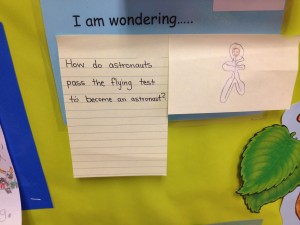Classroom of Care:
I believe creating a classroom of care where students feel safe and supported is integral for setting students up for success. Students must recognize that their voices matter and that they are part of a classroom community that values their opinions and encourages them to express their thoughts, questions and concerns.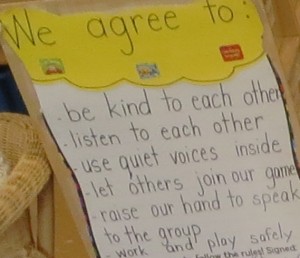 In order to create such a classroom, it is important that during the first week of school, together as a class we create a classroom agreement. We will discuss the roles and expectations of both the teacher and student. I will help scaffold students so that there are certain elements included such as respect, tolerance, and camaraderie. For example, I will ensure that there is a rule that focuses on respecting the opinions and viewpoints of all classmates. In my opinion, this is integral to fostering a sense of belonging in all students. I will have students sign the agreement or put their handprints on the document to signify their understanding. It is extremely important that I also sign and participate in this agreement, as students need to understand that the teacher is held to the same expectations. It will then be visually displayed as our promise to each other.
In order to create such a classroom, it is important that during the first week of school, together as a class we create a classroom agreement. We will discuss the roles and expectations of both the teacher and student. I will help scaffold students so that there are certain elements included such as respect, tolerance, and camaraderie. For example, I will ensure that there is a rule that focuses on respecting the opinions and viewpoints of all classmates. In my opinion, this is integral to fostering a sense of belonging in all students. I will have students sign the agreement or put their handprints on the document to signify their understanding. It is extremely important that I also sign and participate in this agreement, as students need to understand that the teacher is held to the same expectations. It will then be visually displayed as our promise to each other.
In my opinion, one of the ways to create a safe and supportive classroom focuses on the teacher’s ability to establish positive teacher-student relationships.  Research has also concluded that students are at a greater risk of academic failure if they do not have a supportive relationship with their teacher (Hamre & Pianta, 2006). In my opinion, in order to foster a positive relationship with students, I make it a priority to have frequent check-ins with students. My goal is to get to know students’ interests and hobbies. For example, I created a germ song based on the theme song of Frozen after students were referring to the Frozen movie in class. Moreover, I had a very creative and imaginative group of students who loved to build and create using different manipulatives.
Research has also concluded that students are at a greater risk of academic failure if they do not have a supportive relationship with their teacher (Hamre & Pianta, 2006). In my opinion, in order to foster a positive relationship with students, I make it a priority to have frequent check-ins with students. My goal is to get to know students’ interests and hobbies. For example, I created a germ song based on the theme song of Frozen after students were referring to the Frozen movie in class. Moreover, I had a very creative and imaginative group of students who loved to build and create using different manipulatives.
As a result, I incorporated activities such as building a 3D shape monster and producing art by using a stick (at first it was a stick now it is a…) so that students could tap into their creativity. Incorporating students’ interests and preferences into lessons makes the content more meaningful and relatable. When students feel supported by their teacher this positively affects students’ motivation and passion for learning (Jennings & Greenberg, 2008). It also shows students that I care about them and that I value their opinions and voices!
Social Emotional Learning (SEL):
According to the organization Collaborative for Academic, Social, and Emotional Learning which is one of the leaders 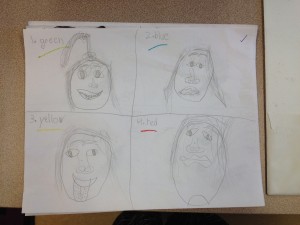 at the forefront of social emotional learning, they believe that SEL programs “one, promote students’ self-awareness, self- management, social-awareness, relationship, and responsible decision-making skills; and two, improve student attitudes and beliefs about self, others, and school” (CASEL, 2015). SEL was an integral part of my classroom management strategies that I utilized. It is important that students develop self-management skills so that they are able to assess their own emotions and the skills and tools they could utilize in the classroom to get the best possible educational experience.
at the forefront of social emotional learning, they believe that SEL programs “one, promote students’ self-awareness, self- management, social-awareness, relationship, and responsible decision-making skills; and two, improve student attitudes and beliefs about self, others, and school” (CASEL, 2015). SEL was an integral part of my classroom management strategies that I utilized. It is important that students develop self-management skills so that they are able to assess their own emotions and the skills and tools they could utilize in the classroom to get the best possible educational experience.
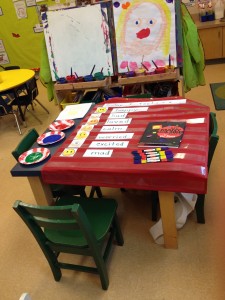 To introduce SEL to early primary students I read My Many Coloured Days by Dr. Seuss, to explain to students that there is nothing wrong with expressing and having multiple feelings. I later connected this book to a feelings stick activity where I supplied every student with a hand made feelings stick that they used to explain how they were feeling. Later in my practicum I also implemented The Zones of Regulation. I found this to be a very successful classroom management strategy for students to develop self-awareness and self-management skills.
To introduce SEL to early primary students I read My Many Coloured Days by Dr. Seuss, to explain to students that there is nothing wrong with expressing and having multiple feelings. I later connected this book to a feelings stick activity where I supplied every student with a hand made feelings stick that they used to explain how they were feeling. Later in my practicum I also implemented The Zones of Regulation. I found this to be a very successful classroom management strategy for students to develop self-awareness and self-management skills.
Inquiry Based Teaching
For inquiry based teaching, learning is a process, where students ask questions, investigate, collaborate, reflect and make connections with life experiences (Short, 2009). During my practicum experience I made inquiry come to life by following the Kath Murdoch inquiry model of tuning in, finding out, sorting out and going further (Murdoch, 2010).
Students started our unit by discussing and developing a first think of everything that they knew about the unit, followed by creating a wondering about the big idea (e.g. wonder wall). Throughout the unit as the children and I continued to gather information and investigate our findings we made our learning visible by documenting the stages of inquiry. Another strategy that I utilized was having inquiry stations where students explored unknown items and discussed their wonderings, thinking, and ideas with classmates. I firmly believe that students learn from their peers and inquiry based teaching aligns with cooperative learning as students constantly engage and learn from their classmates.
It is important to encourage and support students’ questions but creating “a culture of inquiry happens when teachers breathe inquiry as a part of their lives” (Wolk 2008). This meant that I too modelled how to be an inquirer by thinking and expressing my own wonderings out loud. When teaching through an inquiry lens there was an exciting “buzz” in the classroom, which as a teacher I found extremely gratifying. It made my teaching come to life!
Assessment
Formative and Summative Assessment is a pivotal component of my teaching. It is important for assessment to be reliable, valid and fair so that students are set up for success (Tierney, 2013). In the Kindergarten classroom I made expectations simple and clear for students so that they would be able to understand fully the task at hand and what was required. 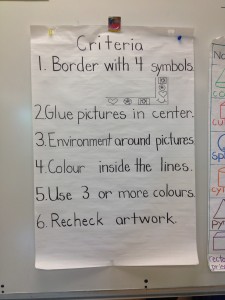 I also introduced students to assessment terminology. For example, I introduced the term criteria to the students and would regularly write/draw the criteria on the board/charts when students were completing the task. It was very gratifying to hear students ask questions such as “What is the criteria Miss McArthur?”
I also introduced students to assessment terminology. For example, I introduced the term criteria to the students and would regularly write/draw the criteria on the board/charts when students were completing the task. It was very gratifying to hear students ask questions such as “What is the criteria Miss McArthur?”
I utilized a variety of assessment strategies and tools including rubrics, checklists, anecdotal records and exit-slips as well as self and peer assessment. Over the course of my practicum I found one-on-one assessment to be critical in order to evaluate students’ reading abilities, and mathematical comprehension of 3D shapes. In Kindergarten there is limited if any free teacher time during the day; however I found writing down anecdotal comments whenever I had a spare moment based on my daily observation to be critical. Although it might not have been a long comment, making observations and recording comments regularly creates a more reliable and thorough assessment.
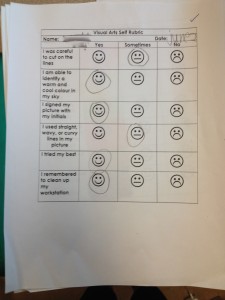 I also saw the benefits of introducing self-assessment in the classroom. I helped students take ownership for how they did their work and what the end product would look like upon completion. By participating in assessment as learning, students were able to reflect on their own learning to see what areas they needed to improve upon as well as set future goals.
I also saw the benefits of introducing self-assessment in the classroom. I helped students take ownership for how they did their work and what the end product would look like upon completion. By participating in assessment as learning, students were able to reflect on their own learning to see what areas they needed to improve upon as well as set future goals.
Differentiated Learning:
Every student learns differently and creating a learning environment that supports students’ individual learning styles, social, cultural backgrounds and prior knowledge is imperative to my teachings (Dumont, Istance and Benavides, 2012). 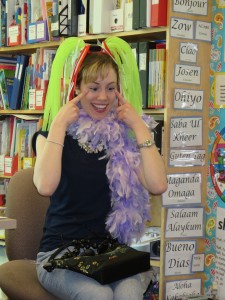 My teachings reflect students’ individual needs and incorporate a variety of different activities and extensions that allow students to show how they learn best. I believe a big part of this, is to allow for student choice. During practicum, I tried my best when possible, to have activities that were visual, auditory, and kinesthetic. For example, when introducing 3D shapes I had mystery bags where students had to feel the items and describe what they felt. After this we had visual representations of the 3D shapes as well as we sang a song about 3D shapes to help students remember some of the terminology. Again it comes down to knowing your students, to create the best possible lessons!
My teachings reflect students’ individual needs and incorporate a variety of different activities and extensions that allow students to show how they learn best. I believe a big part of this, is to allow for student choice. During practicum, I tried my best when possible, to have activities that were visual, auditory, and kinesthetic. For example, when introducing 3D shapes I had mystery bags where students had to feel the items and describe what they felt. After this we had visual representations of the 3D shapes as well as we sang a song about 3D shapes to help students remember some of the terminology. Again it comes down to knowing your students, to create the best possible lessons!
References:
Collaborative for Academic, Social, and Emotional Learning. (2015). Outcomes associated with the five competencies. Retrieved from http://www.casel.org/
Dumont, H., Istance, D. & Benavides, F. (Eds.). (2012). The Nature of Learning: Using research to inspire practice. Practitioner guide. Paris: OECD Publishing.
Hamre, B. K., & Pianta, R. C. (2006). Student-teacher relationships. In G. G. Bear & K. Minke (Eds.), Children’s Needs III: Development, prevention, and intervention (pp. 59-71). Bethesda, MD: NASP.
Jennings, P. A., & Greenberg, M. T. (2008). The prosocial classroom: Teacher social and emotional competence in relation to student and classroom out comes. Review of Educational Research, 79, 491-525.
Murdoch, K. (2010). The phases of inquiry. Retrieved from http://www.kathmurdoch.com.au/index.php?id=22
Short, K. (2009). Inquiry as a stance on curriculum. S. Davidson & S. Carber (EDs.) Taking the PYP forward. John Catt Education Ltd.
Tierney, R.D. (2013). Six strategies for fair classroom assessment. Education Canada, 53(3), 20-23.
Wolk, S. (2008). School as inquiry. The Phi Delta Kappan, 90(2), 115-122.

